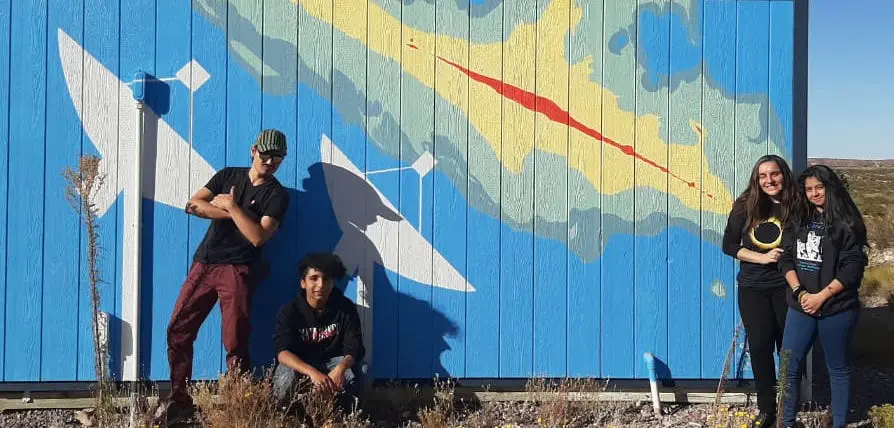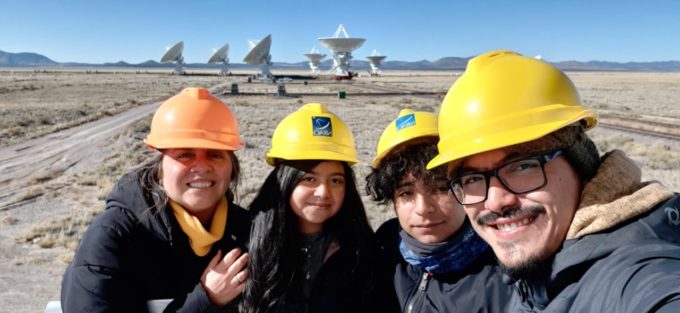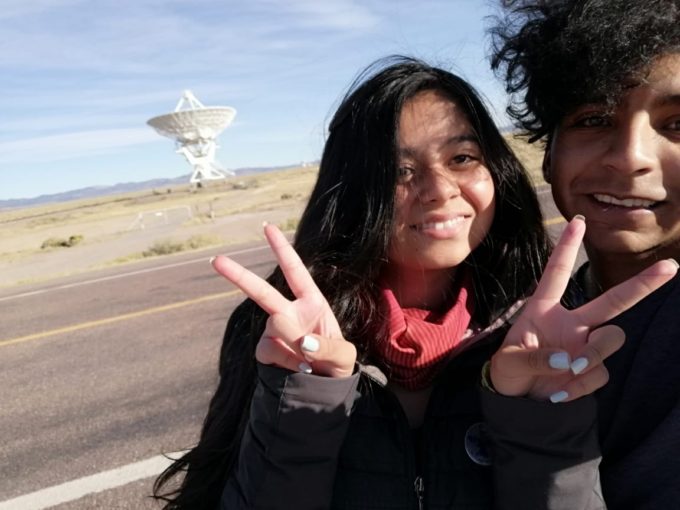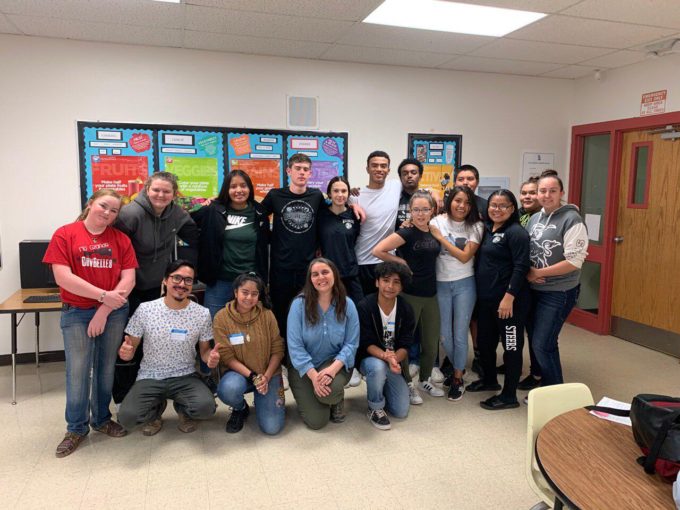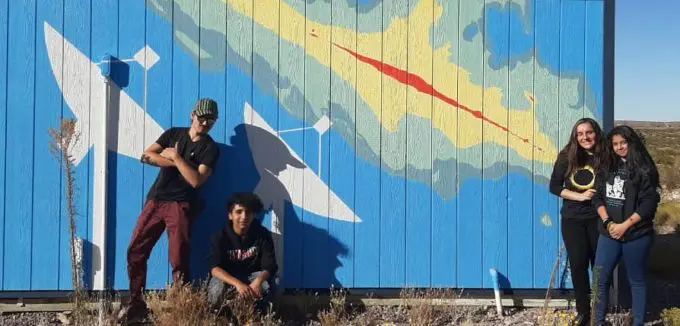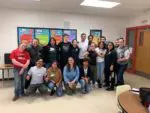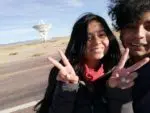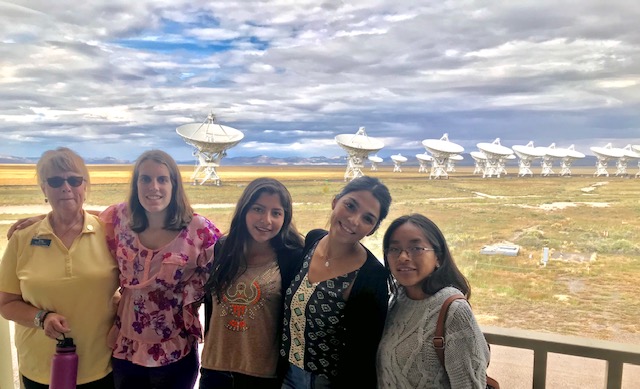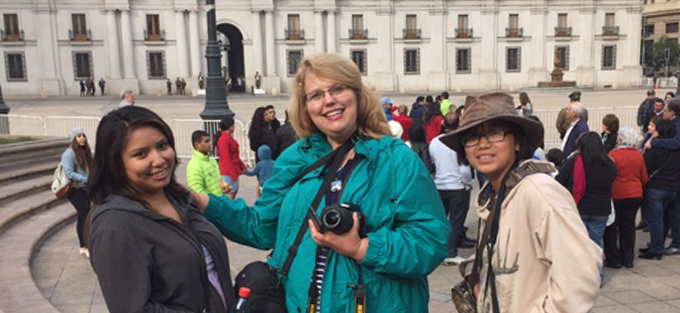Astronomical Projects in Toconao thanks to the “Sister Cities and Observatories” Program
Through a scientific and cultural exchange, the “Sister Cities and Observatories” program led by the National Radio Astronomy Observatory (NRAO) STEAM Education division, North-American partner of ALMA, brings together communities of students and teachers in Socorro, New Mexico, USA, and San Pedro de Atacama, Chile. In October, two students and one teacher from the Toconao Educational Complex traveled to the United States for 10 days, and in 2020 they will implement their proposed projects: a sundial, a website disseminating scientific-astronomical information, and satellite communications antennas made from recycled material.
The program is focused on high school students and their teachers, with the goal to foster research related to STEAM (science, technology, engineering, art, and mathematics) within the local schools and foster communication with Chilean an U. S. teachers and students through shared research experiences.
Toconao students, Camila Pérez (9th grade), Simón Contreras (11th grade) and math teacher, Felipe Lizana, toured the Very Large Array (VLA) Observatory facilities and Magdalena Municipal Schools as part of their visit to New Mexico. They also participated in classes and round tables with teams of scientists and astronomers who work at NRAO. “It was an incredible opportunity to learn from other teachers about ways to teach in harmony with astronomy and the indigenous culture, and to bring these new techniques back with us to science fairs, math expos and other school activities,” commented Mr. Lizana.
Sonia Duffau, astronomer and Outreach and Diversity Officer at AUI/NRAO, ALMA Observatory’s North American partner, highlighted that the Sister Cities and Observatories program provides a unique opportunity for cultural exchange and learning, and a wonderful discovery of similarities between the realities and ancestors of the Navajo and Atacameño culture.
“Thanks to the sister cities concept, I now understand certain similarities that result from having the same cultural tools with a significant influence from the Sun, agricultural development, and the connection between humans and their environment. I was surprised to learn that the Navajo culture uses many words that are similar to Spanish because they were a Spanish colony,” added Simón Contreras (17, San Pedro resident).
In their application to this program, students were asked to propose projects that they would implement at their school in 2020, and those selected this year include a sundial with representations of constellations from the Atacameño vision of the Cosmos (Camila Pérez), a website disseminating scientific-astronomic information and an indigenous vision of the Cosmos (Simón Contreras), and the development of satellite communications antennas made from recycled material, which improve the Wi-Fi connection and act as signal transmitters and receivers (Felipe Lizana).
“My solar clock will be located in the town of Toconao and it will let us compare elements from San Pedro’s ancestral astronomy, the vision of the Cosmos and language of the Likan Antai Culture, and current astronomy, considering constellations with different names. The project gets its inspiration from a place where children can interact, where they can learn from tradition and from science,” says Camila Pérez, who seeks to impassion more girls to follow a science pathway.
Next March, the experience will be reversed when New Mexico students will visit San Pedro, Toconao, and the ALMA observatory in Chile.
Additional Information
ALMA is a partnership between ESO (on behalf of its European Member States), NSF (USA), and NINS (Japan); together with NRC (Canada), MOST and ASIAA (Taiwan), and KASI (Republic of Korea), in cooperation with the Republic of Chile. The Joint ALMA Observatory is operated by ESO, AUI/NRAO, and NAOJ.
The National Radio Astronomy Observatory is a facility of the National Science Foundation (NSF), operated under cooperative agreement by Associated Universities, Inc. (AUI). In Chile, AUI/NRAO currently collaborates with research institutes in Europe and East Asia on ALMA Observatory operations. In the United States, AUI/NRAO operates the Very Large Array (VLA), Very Long Baseline Array (VLBA) and Green Bank Obseratory (GBO).
Images
Contacts
-
Nicolás Lira
Education and Public Outreach OfficerJoint ALMA Observatory, Santiago - ChilePhone: +56 2 2467 6519Cel: +56 9 9445 7726Email: [email protected]
